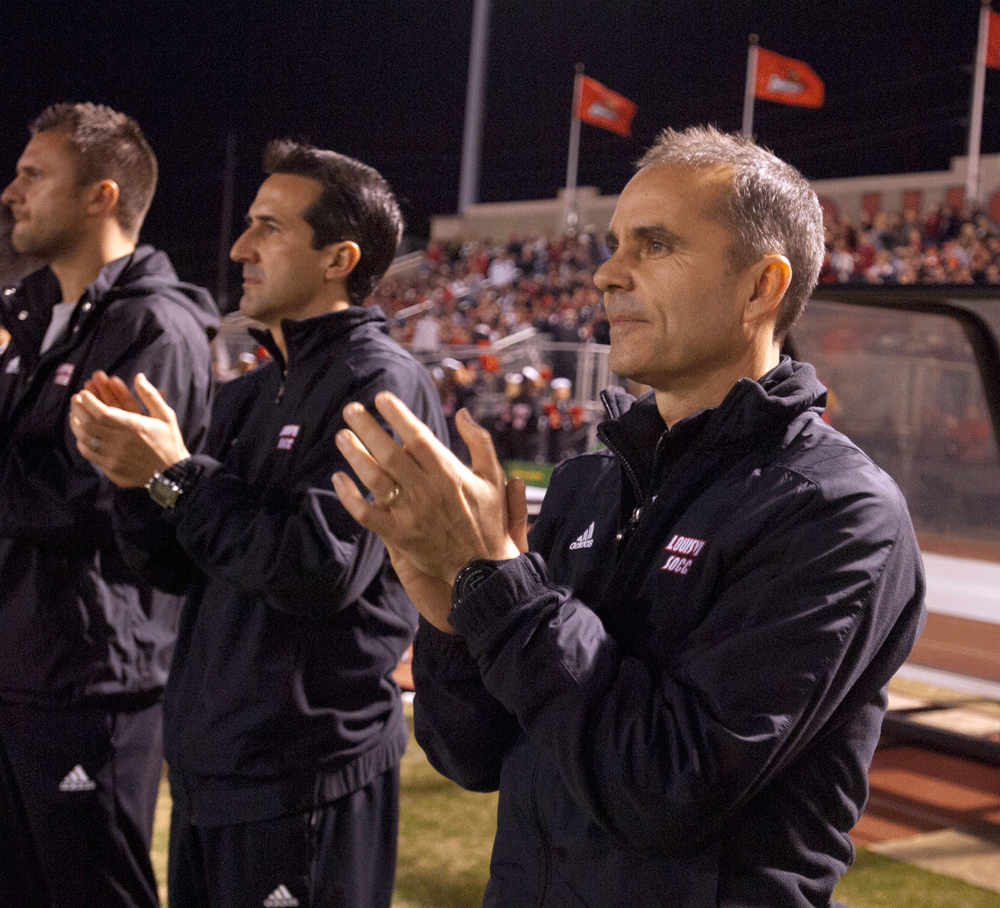From the perspective of Louisville soccer, the move to the ACC is the best possible outcome of conference reshuffling.
The Big East and ACC have been the top two men’s soccer conferences for some time. Look at the current NCAA bracket – three of the surviving teams (Louisville, Georgetown and UConn) are from the Big East and two (Maryland and UNC) are from the ACC. An ACC team has won nine of the last 21 national titles, and North Carolina is the defending champion this year. (The Big 12, in contrast, doesn’t have men’s soccer.)
A look at the conference RPI rankings before and after the reshuffle paints an interesting picture. The NCAA only provides rankings, rather than raw numbers, so the conference averages aren’t as accurate as they might be, but they still tell a tale.
Under the current conference alignment, the nine soccer-playing teams in the ACC (Florida State, Miami and Georgia Tech do not have programs on the men’s side) average 43.7. That is slightly better than the 15-team Big East’s 46.1 – a figure skewed by DePaul and Pittsburgh, which dwell in the triple digits. Only Virginia Tech is in triple digits in the ACC, and it’s above the two lowest Big East squads. The seven teams playing soccer in the current Big Ten average 49.7.
When you start moving the pieces around, the Big Ten comes out best, since both Maryland and Rutgers are ranked above the conference average and improve it to 42.6. The ACC drops to 47.2, with the improvement from adding #1 Notre Dame, #13 Louisville and #40 Syracuse weighed down by bringing in #122 Pitt. Those departures also hurt the Big East, as it’s average RPI rank falls to 48.2, and that’s without figuring in any other teams that may or may not join the floundering league. Few of them play soccer anyway.
UofL men’s coach Ken Lolla was understandably excited at the prospect of playing in the ACC. Cards’ fans should be too, as it will bring a steady stream of top-notch teams into that new soccer stadium.
For the Cardinal women, though, the move is an enormous step up in class and probably means a few tough seasons before the benefits of ACC membership begin to pay off on the recruiting end. The UofL women, while vastly improved in recent years, have not been consistent contenders in the Big East, which is a middle-of-the-pack conference in women’s soccer.
The ACC is unquestionably the toughest women’s league in the land. Of course, it boasts the legendary UNC program that has produced US national team icons such as Mia Hamm and Kristine Lilly, and current stars Heather O’Reilly and Tobin Heath. But there’s incredible depth. Seven of the 11 ACC teams – eight if you count Notre Dame – are in the current top 25 in the RPI, and Maryland is the one at #25. So the Cards, currently #45 in the RPI, face a formidable challenge.
On the other hand, regular visits from the likes of UNC, Florida State, Virginia and Duke should build interest in Louisville women’s soccer and can only strengthen the program in the long run.
On the whole, a great day for Louisville soccer.
